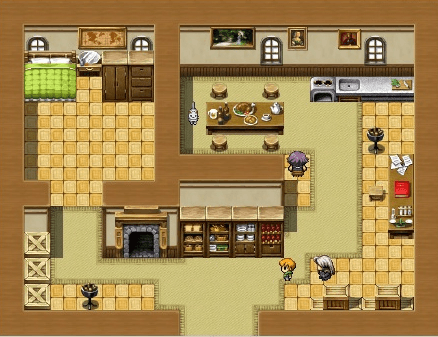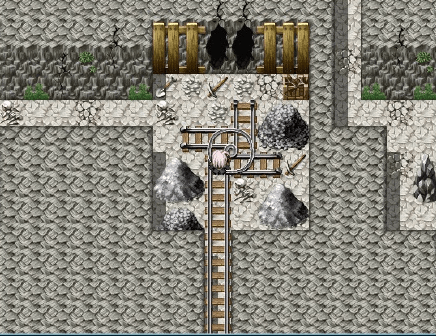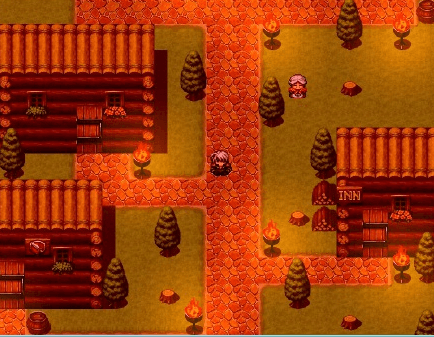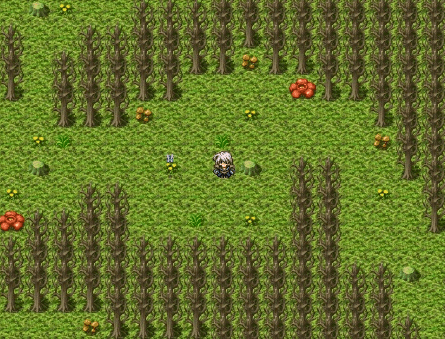- Wondering how to get Monopoly GO! free rolls? Well, you’ve come to the right place. In this guide, we provide you with a bunch of tips and tricks to get some free rolls for the hit new mobile game. We’ll …
Best Roblox Horror Games to Play Right Now – Updated Weekly
By Adele Wilson
Our Best Roblox Horror Games guide features the scariest and most creative experiences to play right now on the platform!The BEST Roblox Games of The Week – Games You Need To Play!
By Sho Roberts
Our feature shares our pick for the Best Roblox Games of the week! With our feature, we guarantee you'll find something new to play!Type Soul Clan Rarity Guide – All Legendary And Common Clans Listed!
By Nathan Ball
Wondering what your odds of rolling a particular Clan are? Wonder no more, with my handy Type Soul Clan Rarity guide.
Valcarta I: Rise of the Demon Review
The first title in a planned five-game series, Valcarta I: Rise of the Demon introduces us to the expansive world of Drachell and our young swordsman protagonist, Valak. On what should be an uneventful trip to a neighboring town, Valak is cornered by a witch and forced to choose between receiving the power of light or darkness, sealing his destiny and the path he will follow for the rest of the game.

Valcarta I provides a lot of game, but little motivation to play it.
The first title in a planned five-game series, Valcarta I: Rise of the Demon introduces us to the expansive world of Drachell and our young swordsman protagonist, Valak. On what should be an uneventful trip to a neighboring town, Valak is cornered by a witch and forced to choose between receiving the power of light or darkness, sealing his destiny and the path he will follow for the rest of the game.
Each path tells one opposing side of the game’s main story, in which the Empire (light path) and Brotherhood (dark path) are racing to collect the crystals and power of the world’s Elemental Lords. The group Valak chooses to side with will determine not only his motivations throughout the story, but also the characters he’ll meet, party members who join him, skills he’ll learn, equipment he’ll use, areas he can access, and more. Although the story doesn’t change drastically, these branching paths provide significant replay value for Valcarta, ensuring a second playthrough will be different. For instance, light path Valak develops into a Paladin with a heavy focus on healing and holy spells, while dark path Valak operates more as a Dark Knight who specializes in shadow and life-absorbing abilities.
Regardless of the path you choose, the bulk of the game will be spent traveling the world in search of the aforementioned Elemental Lords, while operating out of a main base where the crystals are stored. Although this can give the game an overall fetch quest feel, Valcarta turns this setup into an advantage by allowing you to buy consistently better equipment from this location and keeping track of your next goal. Once the world opens up more via air travel and additional side quests are available, this “home base” becomes even more useful as a way to stay focused and prepped for the next battle.
This battle prep is key. Valcarta fully embraces its retro RPG inspirations, throwing random encounters at you constantly—numerous times I’ve ended a fight just to take one step and enter another—and rarely allowing for escape at higher levels. This means you’ll be fighting, a lot. Luckily, the battle system is one of Valcarta‘s strongest features. Although it is a standard turn-based system, the real fun and challenge arises from the plethora of skills and status effects which actually come into play in every fight. Unlike many RPGs where you can simply spam “Attack” to get through almost every battle, you’ll need to use characters’ skills regularly in order to survive. With even bosses being susceptible to many spells and status effects, finding the right balance between offensive and support skills results in different strategies being viable throughout the game. This extends to your equipment choices as well—the newest, strongest armor you have may be less useful than the item that will protect you against paralysis and frostbite, especially if you’re traveling through snowy mountains.
Although the battle system is a predominant part of any RPG experience, and Valcarta‘s is greatly enjoyable, the game suffers in the genre’s other critical areas: plot and characters. We’re thrown into Valak’s story out of nowhere, with the expectation that he will be flushed out as the game progresses. Unfortunately, he remains a one-dimensional avatar for most of the game, with his primary characteristic in the light path being a valiant aversion to killing people, despite his constant killing of anyone who threatens his mission. He also chooses to take up arms with a bloodthirsty sea captain whose only feature is a desire to fight and kill anyone remotely villainous, yet Valak never questions this partnership or if their mission is actually righteous. The other party members that join along the way are similarly flat, with very little growth and even less backstory provided.
The world of Drachell suffers from its own lack of exposition, despite featuring very distinct realms and unique clans of people as inhabitants. The majority of NPCs you’ll meet provide inane conversation that never bothers to explain the world around you. Someone in the cave of the Riptide Clan exclaims, “The Riptide Clan is just fascinating, don’t you think?!” If you talk to everyone within the cave, the only “fascination” you’ll learn is that they can shoot water from their hands and that they’re having fish for dinner. In Winter’s Hold Fortress, almost everyone you encounter says some variation of “Watch yourself, outsider.” This could be an interesting xenophobic city, yet their hatred of outsiders is never explained or discussed in any way. The game ends up using the aforementioned “home base” as the primary method of introducing plot, through a character who will give you assignments while explaining the current situation in lengthy detail, leaving locations like Winter’s Hold and other characters to be little more than quest hubs and world decor.
The plot and character interactions are often confusing, and at times entirely contradictory. At a certain point, one of your main characters is suddenly murdered, leaving the party shocked, angry, and vowing to track the killer. However, as soon as they reach their next destination, the death has been forgotten and is not even mentioned. Instead, they joke about the weather and the story moves on. Valak’s actions often contradict his “pacifist” nature, like setting fire to a building full of people or shrugging off when the sea captain murders an opponent who’s stopped attacking. Moments like these make the characters’ intentions even more difficult to follow and nearly impossible to empathize with.
On top of these deterrents from the main quest and characters, Valcarta also discourages exploration through its dungeon and quest arrangement. Dungeons are often set up as sprawling mazes, but the corridors and side paths you can take rarely afford any reward besides a dead end (or only provide an item you can sell for gold). Cities and dungeons you can visit out of order will almost always be closed off, or will not contain their related quest item, until the main quest reaches a certain point. Even waiting until you are explicitly told to visit an area can result in time wasted: for example, after I completed a side quest in Abardean, the quest’s NPC told me to visit the western Web Wood Forest to receive a reward. However, that specific section of the forest is closed off even after this character instructs you to go there, because it is not available in the main quest yet. In another instance, I returned to Valak’s hometown to speak with the mayor after visiting the King, as the quest had originally instructed me. The mayor acted like I had not been to the King yet. Two unrelated quests later, I was told to return to the mayor—who suddenly recognized that I had spoken with the King.
These timeline restrictions, on top of contradictory character actions and lack of growth, results in a story that is extremely difficult to become immersed in. Although Valak and friends are fun to control in battle and Drachell has obvious potential for expansive adventures, this first Valcarta game fails to provide enough reason to commit to an entire series within their world. Valcarta II: The Awakening is currently in development and does look to enhance many aspects of this game: it will feature an overhauled equipment system with synthesis options, dungeons with puzzle rooms, on-screen enemy encounters, new game plus, and more. My greatest hope, however, is that it expands upon its world and characters—they already have a strong technical RPG to reside within. They themselves need to be fleshed out, or else Valcarta will continue to be little more than fun battles with no real meaning.

The good

The bad
More articles...
Monopoly GO! Free Rolls – Links For Free Dice
By Glen Fox
Wondering how to get Monopoly GO! free rolls? Well, you’ve come to the right place. In this guide, we provide you with a bunch of tips and tricks to get some free rolls for the hit new mobile game. We’ll …Best Roblox Horror Games to Play Right Now – Updated Weekly
By Adele Wilson
Our Best Roblox Horror Games guide features the scariest and most creative experiences to play right now on the platform!The BEST Roblox Games of The Week – Games You Need To Play!
By Sho Roberts
Our feature shares our pick for the Best Roblox Games of the week! With our feature, we guarantee you'll find something new to play!Type Soul Clan Rarity Guide – All Legendary And Common Clans Listed!
By Nathan Ball
Wondering what your odds of rolling a particular Clan are? Wonder no more, with my handy Type Soul Clan Rarity guide.








 “
“ “
“ “
“